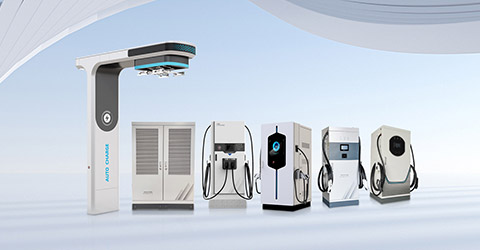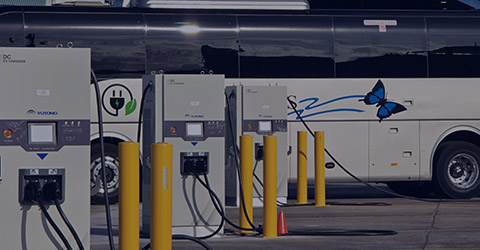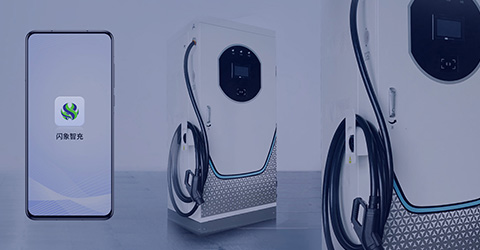EV Charging Pile Basic Knowledge
This article will show you some knowledge about EV charging pile and help you learn about it better.

What are the types of EV charging pile?
EV charging piles can be classified according to installation methods, charging levels, etc.
| Installation Method | Characteristics | Examples of Locations |
| Wall-Mounted / Pole-Mounted EV Charging Pile | Relatively compact; mounted on a wall or pole; suited for limited spaces such as homes, apartments, garages, and parking lots; typically offers Level 2 charging. | Homes, apartments, workplaces, parking lots |
|
Ground-Mounted EV Charging Pile |
Installed flush with the ground or pavement; common in public parking lots, roadside venues, and commercial facilities; available with Level 2 or DC fast charging options. | Public parking lots, commercial premises |
| Charging Level | Description | Example |
|
Level 2 Charging station |
Uses a 240V AC plug; faster than Level 1 charging; suitable for home and public use. | Charging at home, workplace charging stations, public charging stations |
|
Level 3 Charging station |
Also known as DC Fast Charging; provides rapid charging, typically up to 80% in approximately 20 minutes. | DC Fast Charging stations along highways, major travel routes |
What are the connector type of charging pile?
| Connector Type | Description |
| SAE J1772 (Type 1) | Common in North America; used for Level 1 and Level 2 charging. |
| Type 2 (Mennekes) | European standard for Level 2 charging and some Level 3 charging. |
|
CHAdeMO |
DC fast charging standard mainly used in Japan. |
|
CCS (Combined Charging System) |
DC fast charging standard used in Europe and North America. |
|
Tesla Connector |
Proprietary connector used in Tesla vehicles; adapters available for other types of chargers. |
What is the typical power of an EV charging pile?
| Charging Level | Power Output Range |
| Level 2 Charging | Common power outputs for Level 2 charging piles include 7 kW, 11 kW, and 22 kW. In some regions like North America, Level 2 chargers can also reach up to 19.2 kW. |
|
DC Fast Charging |
These can vary widely but often start at around 50 kW and can go up to 350 kW for the highest-powered versions. |
What are the working principles of EV charging pile?
DC charging piles convert alternating current into direct current through a transformer, and then charge electric vehicles.
The AC charging pile directly transmits AC power to the electric vehicle to charge the battery of the electric vehicle.
Definition of EV charging pile and EV Charging Station
In the past, “charging stations” and “charging piles” were often defined differently because they represented distinct types of infrastructure for electric vehicles (EVs). Charging stations typically referred to locations where multiple charging piles or points were installed, allowing several vehicles to charge simultaneously. Charging piles, on the other hand, specifically referred to the physical units or devices used to deliver electricity to the vehicle’s battery.
However, as the EV industry has evolved and standardized, the distinction between charging stations and charging piles has blurred in some ways. Now, the terms are often used interchangeably or combined into the broader concept of “charging infrastructure.” This shift in language reflects a more comprehensive understanding of EV charging facilities, which may consist of various configurations of charging points, piles, and stations to accommodate different needs and settings.
Additionally, advancements in technology have led to the development of more versatile charging infrastructure, such as modular charging units that can be deployed individually or as part of a larger station, further contributing to the convergence of terminology.
What are the main technical indicators of charging piles?
The main technical indicators of charging piles include charging power, charging efficiency, safety performance, communication interface, billing method and service functions.
1. Charging power: It is the electric power supplied to electric vehicles when charging at the charging pile. It is generally expressed in kW (kilowatts) or MW (megawatts) and can be divided into different power levels such as slow charging, fast charging and super fast charging.
2. Charging efficiency: refers to the energy conversion efficiency between electric energy input and output, which mainly depends on the quality and performance of the charging equipment.
3. Safety performance: Including the insulation resistance, leakage protection, overcurrent protection, overvoltage protection, temperature protection and lightning protection of the charging pile to ensure the safety and reliability of the charging process.
4. Communication interface: used to communicate with electric vehicles, including wired interfaces and wireless interfaces, using communication protocols such as CAN, Modbus, and TCP/IP.
5. Billing methods: including prepayment, postpayment, time period fee, and billing based on electricity, etc., and can be settled through RFID, NFC, Alipay, WeChat and other payment methods.
6. Service functions: including scheduled charging, remote monitoring, remote update, data management, fault diagnosis and information release and other service functions to provide a better charging experience and intelligent management.





